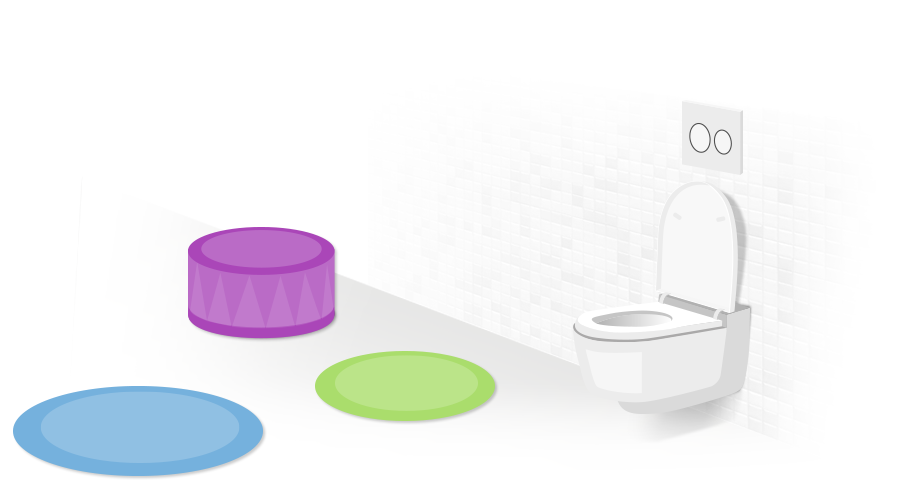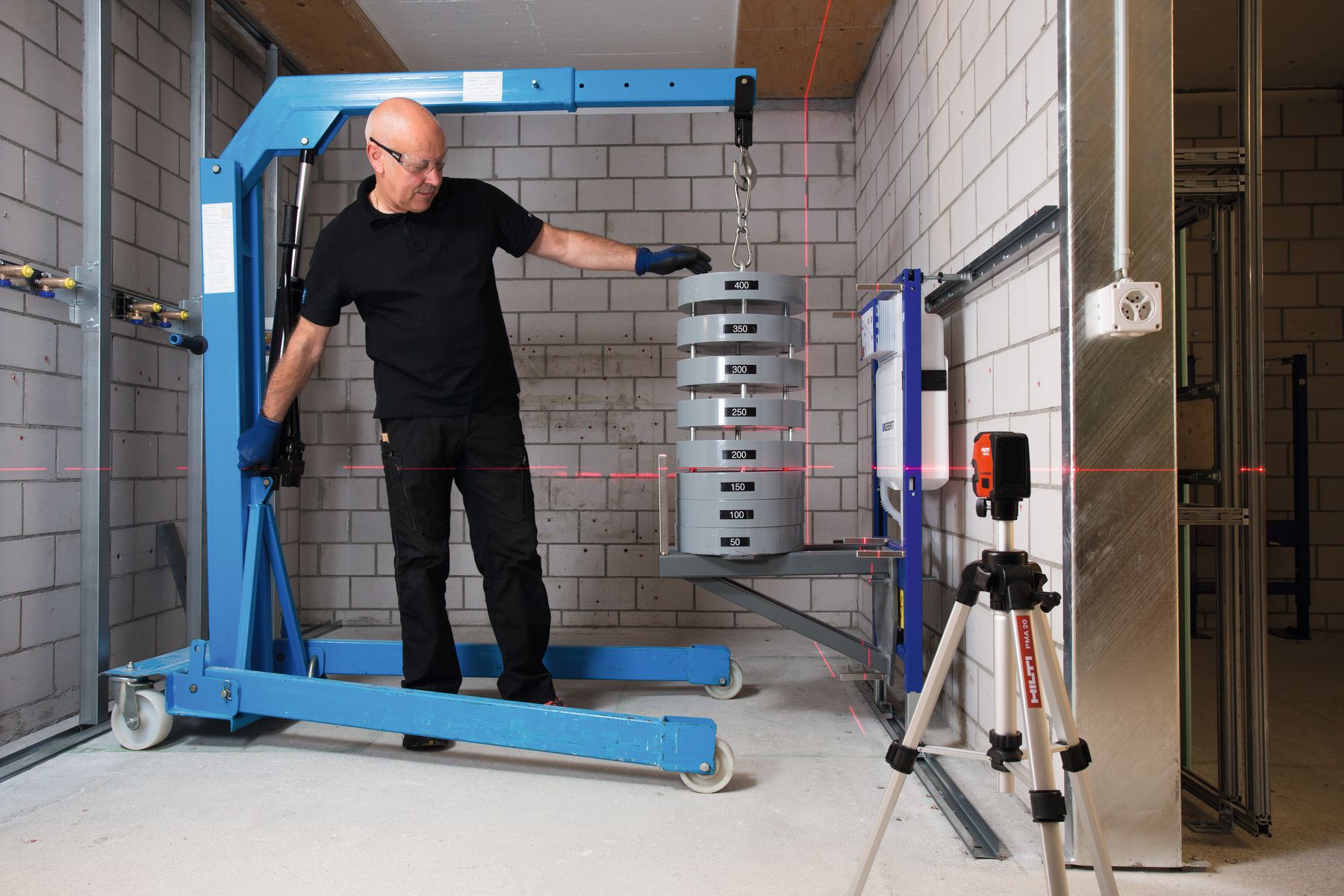Statics
How strong is a toilet?
Find out how much weight a wall-hung WC has to be able to bear according to EU rules and
regulations by placing the different animals on the toilet.




Bear the load
Oversize
Piggyback
Solid as a rock
A full-grown Kodiak bear and a well-equipped Harley-Davidson can each tip the scales at 400
kilogrammes.
The Geberit installation elements for wall-hung WCs are
designed to handle such a
weight.
Wall-hung WC and bidet ceramic appliances have to be designed so that they can withstand loads of up to
400 kilogrammes. This is a European standard specification.
As a matter of consistency, Geberit also designs the
installation elements for drywall or solid
construction to be able to cope with such a load. “When a toilet in front of a drywall is exposed to
maximum loaded, the load-bearing installation element is only permitted to deform slightly,” explains
Oliver Wolff, Head of Building Physics at Geberit International.
“If the degree of deformation exceeds our defined limit values, cracks can appear in the wall tiles or
other damage can occur, which we of course want to avoid at all costs.”

Realistic load test
The Geberit installation elements for wall-hung WCs and bidets are statically designed to be able to bear a load of up to 400 kilogrammes. The maximum load for washbasins and urinals is 150 kilogrammes, and 100 kilogrammes for support handles. For the statics tests in the building technology and acoustics laboratory, the installation elements are built in exactly as they would be at a normal building site. The only difference to real construction situations is that a steel support frame for the test weights – and not a washbasin or WC ceramic appliance – is screwed into the installation elements. This is mainly done for safety reasons.
Narrow tolerances
To be able to precisely measure drops and deformations, the installation elements are equipped with measuring rods at specifically defined points. Laser crosshairs provide the relevant reference points. The drop at the front end of the support frame and the deformation of the installation element are measured before, during and after the test. If they exceed the narrow tolerances defined by Geberit, the design of the installation element has to be revised and improved.
